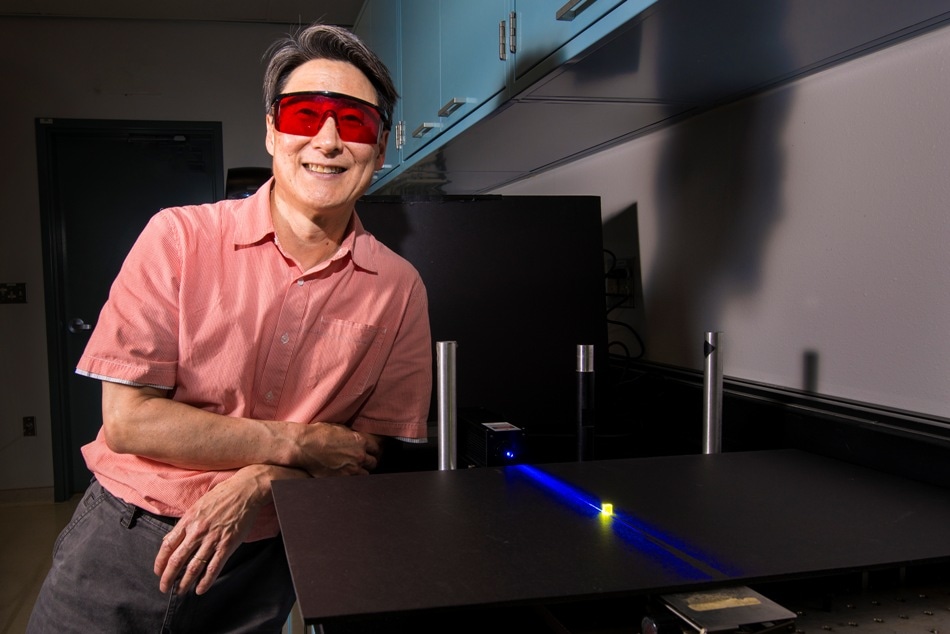Jan 10 2019
Assuming light-emitting diodes, or LEDs, to be merely an efficient upgrade to the regular electric light bulb is a stuck thought, state Jeff Tsao, a Sandia National Laboratories scientist, and his colleagues from other institutions in a Nature “Perspectives” article published in late November.
 Sandia National Laboratories’ Jeff Tsao believes engineered light will accomplish extraordinary things. (Image Credit: Randy Montoya)
Sandia National Laboratories’ Jeff Tsao believes engineered light will accomplish extraordinary things. (Image Credit: Randy Montoya)
“LED lighting is only in its infancy,” the authors write. “We now stand at the threshold of what might be called engineered light.”
Deliberately controlling light in space, time, and spectral content can not only be beneficial to human optics in terms of better lighting but can also help regulate human health and productivity by bringing about a range of hormonal responses.
Furthermore, with regards to plants, the authors write that customized LED wavelengths and intensities have the ability to effectively stimulate their growth, modify their shapes, and improve their nutritional value, paving the way for a whole new realm of scientific and technological opportunities for indoor farming.
That’s not to ignore the integration of LEDs with the internet of things, which is already happening with LED integration with electronics, sensors, and communications.
Jeff Tsao, Researcher, Sandia National Laboratories
The purported Internet of Things denotes electronic circuits with the potential to communicate with each other while being embedded in a range of everyday devices.
In a nutshell, the unavoidable expansion of LED usage could add value to society that is considerably greater compared to the energy saved in lighting buildings and homes, the authors write.
The study was supported by the Department of Energy’s Solid State Lighting Program.